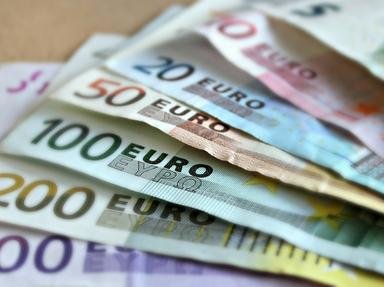Quiz Answer Key and Fun Facts
1. Where is the European Central Bank located?
2. Which of these countries wasn't part of the euro zone in 2004?
3. Until 2018, what was the highest denomination of a euro banknote?
4. According to a report on 7 January 2004, Tony Blair declared his goal was to see Britain joining the euro zone. By which year?
5. How many countries shared the euro currency once rates between former national currencies had been fixed in 1999?
6. Which member of the euro zone used the "Schilling" before the appearance of the single currency?
7. Which country doesn't use 1-cent and 2-cent coins?
8. In 2004, who was the governor of the European Central Bank (ECB)?
9. There's no crowned sovereign on the euro coins coming from which of these countries?
10. Until 2002, which country had the oldest currency in Europe?
11. What is the colour of 20 euros banknotes?
12. The oak leaf is a symbol we can see on single currency coins coming from which country?
13. What had been the lowest value of the euro to the US dollar?
14. On the coins of which country can we see "Europa" represented in the shape of a woman?
15. On the euro coins of which country can one see a harp?
16. In which country did people have to buy purses when the euro arrived because they had almost ceased to use coins?
17. Which banknote pictures the Renaissance architectural era?
18. Which country decided in September 2003 *not* to join the euro till 2013 at the earliest?
19. All euro banknotes have a different colour. Which colour is NO longer being issued?
20. There is a 1 euro coin with the head of the Pope on it.
Source: Author
Marla_Singer
This quiz was reviewed by FunTrivia editor
bloomsby before going online.
Any errors found in FunTrivia content are routinely corrected through our feedback system.
